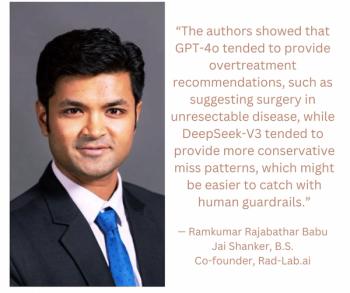
Hurricane Katrina bursts PACS myths for Louisiana radiologists
The radiology department at the Louisiana State University Health Sciences Center in New Orleans passed along valuable lessons learned about PACS disaster recovery from Hurricane Katrina during a Hot Topic presentation at the 2005 RSNA meeting.
The radiology department at the Louisiana State University Health Sciences Center in New Orleans passed along valuable lessons learned about PACS disaster recovery from Hurricane Katrina during a Hot Topic presentation at the 2005 RSNA meeting. A classical PACS setup is very vulnerable. It doesn't take a hurricane to create havoc on a facility's PACS, said Dr. Oleg Pianykh, an assistant professor of radiology at LSU. Despite the high costs that come with implementing a PACS, the systems can be vulnerable to configuration updates, computer viruses, and even to something as simple as a supporter taking the day off. The local area nature of the systems, even with remote backup, introduces vulnerability. These systems are dependent on local infrastructures such as power, network, and Internet service providers. At the New Orleans facility, the ISP was located on the first floor of its building and was flooded in the hurricane aftermath, Pianykh said. The LSU Health Sciences Center PACS was the central hub for seven other cities: Lafayette, Kenner, Shreveport, Baton Rouge, Lallie Kemp, Houma, and Bogalusa. After flooding deluged New Orleans, the facility not only faced technical challenges such as lost networks, workstations, and PACS servers, but it also suffered from nontechnical challenges resulting from the ensuing chaos and personal stress experienced by the radiologists. Pianykh outlined several PACS myths debunked by the disaster:
- Redundancy. Redundancy can’t fix system deficiencies, can’t improve performance, increases system and maintenance costs, and decreases system flexibility.
“Redundancy is the worst way to deal with PACS problems,” he said. “Tenacity should replace redundancy.”
- Backups. Backups can recover data but not functionality. The backups themselves may become damaged. Remote backups can be very expensive, and backups without a PACS are meaningless, according to Pianykh.
“You must have a complete backup PACS solution, not just a data backup,” he said.
- Compromise. Low-cost compromise PACS solutions can suffer from DICOM incompatibility, low image quality, and lack of full PACS functionality. Patchwork and temporary fixes may end up staying around longer then intended
“What you have to do is accept the current situation and brainstorm for the best possible long-term solution,” he said.
Pianykh went on to describe a disaster-proof PACS. This would be a distributed PACS that could be installed and configured in minutes by anyone using any off-the-shelf PC. "You have to look at your PACS architecture and make sure it's not centralized, that it's not localized. It is much better to build smaller, more flexible PACS units," he said.
Newsletter
Stay at the forefront of radiology with the Diagnostic Imaging newsletter, delivering the latest news, clinical insights, and imaging advancements for today’s radiologists.




























